TED: Fahad Al-Attiya: A country with no water - Fahad Al-Attiya (2012)
by: TEDTalks (video), 2013-01-31 16:02:17 UTC
Imagine a country with abundant power -- oil and gas, sunshine, wind (and money) -- but missing one key essential for life: water. Infrastructure engineer Fahad Al-Attiya talks about the unexpected ways that the small Middle Eastern nation of Qatar creates its water supply.
 Milan’s Bosco Verticale On Track to Become World’s First Vertical Forest
Milan’s Bosco Verticale On Track to Become World’s First Vertical Forest
by: Jetson Green, 2013-01-31 02:20:23 UTC

Milan, Italy is one of Europe’s most polluted cities, its air quality frequently breaching safety limits set by the EU and causing city officials to install a ventilation system in 2009 in an effort to reduce damage to Leonardo da Vinci’s The Last Supper that resides in the Santa Maria delle Grazie church. In 2003, a medical study compared breathing air in Milan to smoking almost a pack of cigarettes each day. On top of that, there is less space dedicated to vegetation in Milan than any other Italian city.
Short on space for increasing the presence of greenery, the city turned to architect Stefano Boeri to create the world’s first vertical forests, incorporated into the “Bosco Verticale” apartment towers, currently under construction and nearing completion.

The two residential towers, which are part of a rehabilitation project in the historic district between Via De Island Castillia and Confalonieri, loom 111 meters and 78 meters and will be home to over 900 trees that cover nearly 9,000 square meters of terrace space. They are 24 floors and 17 floors high with combined capacity for 730 trees, 5,000 shrubs, and 11,000 plants.
In addition to producing oxygen, mitigating smog, and providing an ecosystem for insects and birds, the trees and plants on the terraces will help to cool the apartments and reduce the energy costs for air-conditioning, especially when summers in Milan can get hotter than 100 degrees Fahrenheit.
The vertical forest idea has inspired a social housing tower in Spain, called the Torre Huerta, and a “Flower Tower” in Paris that features nearly 400 bamboo plants on its ledges.



Related Articles on JetsonGreen.com:
- Live Screen Vertical Garden for the Home
- Embrace a Lush Vertical Plant Wall
- Grow Food in a Vertical Home Minigarden
 Milan’s Bosco Verticale On Track to Become World’s First Vertical Forest
Milan’s Bosco Verticale On Track to Become World’s First Vertical Forest
by: Jetson Green, 2013-01-31 02:20:23 UTC

Milan, Italy is one of Europe’s most polluted cities, its air quality frequently breaching safety limits set by the EU and causing city officials to install a ventilation system in 2009 in an effort to reduce damage to Leonardo da Vinci’s The Last Supper that resides in the Santa Maria delle Grazie church. In 2003, a medical study compared breathing air in Milan to smoking almost a pack of cigarettes each day. On top of that, there is less space dedicated to vegetation in Milan than any other Italian city.
Short on space for increasing the presence of greenery, the city turned to architect Stefano Boeri to create the world’s first vertical forests, incorporated into the “Bosco Verticale” apartment towers, currently under construction and nearing completion.

The two residential towers, which are part of a rehabilitation project in the historic district between Via De Island Castillia and Confalonieri, loom 111 meters and 78 meters and will be home to over 900 trees that cover nearly 9,000 square meters of terrace space. They are 24 floors and 17 floors high with combined capacity for 730 trees, 5,000 shrubs, and 11,000 plants.
In addition to producing oxygen, mitigating smog, and providing an ecosystem for insects and birds, the trees and plants on the terraces will help to cool the apartments and reduce the energy costs for air-conditioning, especially when summers in Milan can get hotter than 100 degrees Fahrenheit.
The vertical forest idea has inspired a social housing tower in Spain, called the Torre Huerta, and a “Flower Tower” in Paris that features nearly 400 bamboo plants on its ledges.



Related Articles on JetsonGreen.com:
- Live Screen Vertical Garden for the Home
- Embrace a Lush Vertical Plant Wall
- Grow Food in a Vertical Home Minigarden
 Motion Detecting BugPlug Powers Off Gadgets to Save Electricity
Motion Detecting BugPlug Powers Off Gadgets to Save Electricity
by: Jetson Green, 2013-01-22 07:16:30 UTC

Many of our home devices are wasting electricity when they are consuming power in standby mode. Some of these gadgets don’t even have an on/off switch and you have to unplug it or connect it to a power strip that you can turn off.
It might only be a few watts, but add up all of the phantom power consumed in your home and you might be motivated to find a way to save electricity costs. Some estimates put the power usage of standby devices at ten percent of total consumption. Heat generated from devices can limit their lifespan and require your air conditioning systems to work harder.
The solution? Reduce your carbon footprint and your power bill by turning off standby devices whenever possible.
While there are automatic shutdown sockets available, the BugPlug solves the problem of leaking electricity in a fun and attractive package.

This innovative little bug will help you save on electricity drains of stand-by devices, turning them off when you’re not in the room. Polish design team Ah&Oh Studio, Magda Kalek and Kamil Jerzykowski, created the Bug Plug for the 2009 Greener Gadget Competition.
The design was influenced by urban vinyl toys and features motion sensors built in to the two antennaes. When you enter the room the BugPlug is monitoring, it powers on the devices that you have connected to it. The BugPlug has a detachable power cord that can be used with a variety of plugs.
When you leave the room, the timer powers off the devices after a period of time that you configure. Adjust the timer in the BugPlug’s belly button for up to thirty minutes after the BugPlug notices there is nobody in the room.
Until the BugPlug goes into production, there are a wide variety of products available that include automatic shutdown features and timers. I found several options on Amazon, including surge protectors and devices with built-in timers, by searching keywords: automatic shutdown, auto shut-off
What are you doing in your home and office to reduce energy consumption from standby devices?



Related Articles on JetsonGreen.com:
- MeterPlug Helps Save Money and Energy
- How to Save Money, Energy, and Water
- Green Projects to Save Money [Survey]
 Sustainable Design Is MIA at Toronto's Interior Design Show
Sustainable Design Is MIA at Toronto's Interior Design Show
by: TreeHugger Design, 2013-01-28 18:25:00 UTC

It used to be a big deal, marketing design products as green. It doesn't appear to be anymore.
Green Packaging
by: Ecofriend, 2013-01-29 08:04:02 UTC
Rise in Popularity of Sustainable and Green Packaging
The amount of pressure faced by corporations to switch to green packaging is tremendous at the moment, yet simply going green does not actually involve using sustaining packaging since the definition of sustainable packaging states that it is functional, cost effective and is able to provide support to the well being of both humans and the ecology for an extended period of time. Not every single green packaging, like biodegradable plastics, is able to pass these sustainable criteria. They happen to exist alongside you in the world of today but are not used in a widespread manner since they are prohibitively expensive to manufacture, and thus, buy. They do not conform to the definition of sustainability when they cost multiple times more than the price of an equivalent plastic which is non-biodegradable.
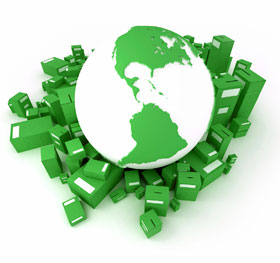
Buyer Beware
If you are considering purchasing packaging materials composed of recycled materials, then you need to pay close attention to the material percentage claimed to be made using recycled materials. Recycled cardboard is one of the finest examples of this trend. If it is stated that the cardboard has been made from 80% of recycled materials than the quality is good since, on an average, almost 20% of pulp from new wood chips needs to be added to it in order to impart the same amount of strength like the original after the process of recycling. But if it is composed of just 40% recycled material, then it will not be quite green.
If a material is only 80% recycled, then long term process of depletion will not be eradicated completely, it will only be slowed down unless proper measures are introduced into the production process of the materials for packaging, like sustainably forested wood. You will be able to achieve a 100% figure only if you use sustainable materials. But in the case of majority packaging items, you are still ways off from achieving this figure. But you should do all you can to minimize the long term damage to the ecology due to packaging of non-biodegradable materials.
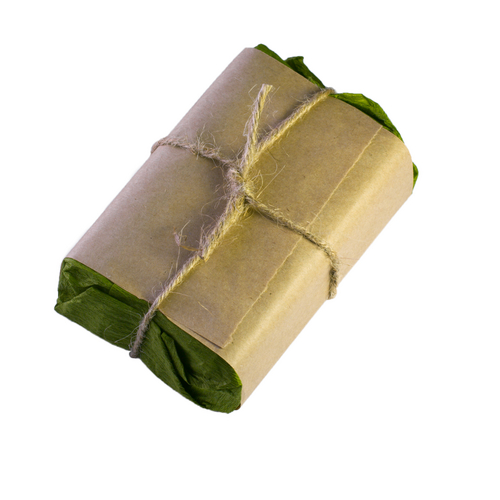
Improve Recycling Process
One of the most important points in enhancing the targets of recycling is to improve the current level of the process, meaning that it is fine if as much of the packaging used by you is composed of recycled materials. However, it becomes pointless if just a nominal amount is actually used for recycling. This can be improved by educating people through the printing of important recycling logos on the outside of the boxes used for packaging. The alternative happens to be the packaging recycling targets led and enforced by the government.
Emerging Sustainable Packaging Types
The trend for ecological modernization has now become a burgeoning social issue thanks to the rising number of modern day businesses practicing sustainable solutions in areas associated with the manufacture, procurement, storage, distribution, moving and inventory. On the other hand, sustainable packaging companies have sought to meet this increasing demand by coming up with innovative new solutions with recyclable packaging.
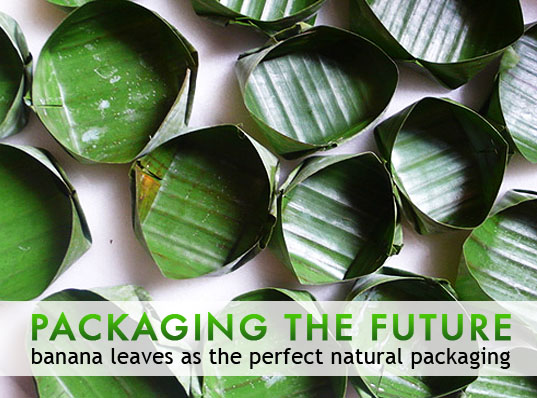
Biodegradable paper packaging is used by most of you in businesses. They help to offer customized and creative packaging design solutions to companies and allow them to decrease the overall carbon footprint. These types of packaging are popularly called compostable packaging since it breaks down the natural process of recycling into components which can be used for composting. This means that the materials are recycled in a natural manner without the necessity of any additional energy. Companies have introduced bioplastics as a substitute to normal plastic packaging. Recycled aluminum packaging and recycled glass packaging are also common in order to help restore the state of the environment.
Green Packaging
Where I Work: Nervous System
by: design milk, 2013-01-29 14:00:35 UTC

Where I Work visits Jessica Rosenkrantz and Jesse Louis-Rosenberg of Nervous System at their Boston area studio. Founded in 2007, the firm designs and makes a range of products from housewares and jewelry to tools and interactive applications. Rosenkrantz studied biology at MIT and architecture at the Harvard Graduate School of Design. Louis-Rosenberg also attended MIT, where he majored in mathematics. Before joining Rosenkrantz at Nervous System, he worked as a consultant for Gehry Technologies in building modeling and design automation. Rosenkrantz acts as Creative Director and Louis-Rosenberg as Chief Science Officer. Together they lead a team of seven, and if you can’t already tell, are the epitome of geek chic.
Befitting their backgrounds, the duo focuses on generative design methods, and use algorithmic and physical tools to design products inspired by natural forms. Products are designed to be affordably and ethically made. They use manufacturing methods that do not require large facilities or massive manual labor. Often, the team employs rapid prototyping methods by which all unique pieces can be manufactured at the same cost as cookie cutter ones. Materials are inexpensive, because they believe that the value of their designs comes from an intelligent and beautiful marriage of form and function, not, say, the current price of gold.

Flex space
What’s your studio environment like?
Our studio is laid back. We are both basically here all day, every day, and we have six employees that work a standard, weekday schedule. I usually pick the music upstairs in the mezzanine and play a mixture of electronic and indie music. Usually there is a competing Pandora station playing downstairs selected by our other staff.

Jewelry boxes
What is your typical work style?
Our work style is chaotic and scattered, but punctuated by short bursts of extreme focus. We’ve tried to impose a schedule on our work innumerable times, but that usually lasts at most, three days. We typically have several different projects we’re working on or thinking about. Our progress is interrupted frequently by preparing for events, getting orders out the door, and by the mundane tasks of running a business. When we have a major deadline, we stop what we’re doing for a few weeks and bang out a new project.

Jewelry display bubble
How long have you been in your current space? Where did you work before that?
We’ve been in our space for just a year now. I feel like we’re still settling in and constantly making changes. Before that we worked out of our house in the woods of western Massachusetts. It was a big house with a separate floor that we used for our office and a garage we used as a woodshop, but it was still cramped. Since we started Nervous System in 2007, we’ve moved all over the country (Santa Monica, Los Angeles, the Catskills, Shutesbury, Somerville, and Cambridge) and worked out of wherever we lived at that point. It’s nice to finally have a commercial space to settle into.
How is your office laid out?
Our office is divided into a few different areas: double-height showroom space, production room, spraybooth, workshop room, laser room, and mezzanine office space.

Assembly table

Bamboo coaster
The production area is very organized and is where most of the product assembly, packaging, and shipping takes place. It has one, giant C-shaped desk that wraps around the whole space with shelving up to ceiling on every wall. The workshop room primarily houses our CNC router (a computer controlled 3D wood carving machine) and wood storage. It also has a sink and hot plates we use for dyeing 3D-prints. Adjoining the workshop is the laser cutter “room” that’s actually a closet under a staircase.

Mezzanine office with Makerbot Replicator 3D-printer on the right
Our office/creative area is on a mezzanine and over looks the double height showroom space. Jesse and I have desks up there as does Nathan (our programmer/engineer) and Aaron (our business manager). Upstairs we also have a fridge, microwave, toaster, espresso machine, kettle, etc. And an infinite supply of Kimchi Ramen. The showroom space hasn’t truly evolved into a real showroom yet, but there’s a portion devoted to showing our lamps and jewelry to visitors. We also use it as a flex space for larger projects. Our six foot long window serves as a cactus nursery. And right by the door we have a Elos saltwater aquarium for keeping live coral.

If you could change something about your workspace, what would it be?
Jesse: It would be bigger and have a ping-pong table.
Jessica: I’d love to have more windows! We only have one, which is big, but not big enough to illuminate the whole office.

Double height mezzanine space
How do you record ideas?
Jesse: I basically keep everything in my head. I’m currently keeping a tasks list (in Gmail) of specific things I want to work on, but are not simply daily tasks.
Jessica: I’m pretty disorganized and have many different places I keep track of things, including a smattering of emails to myself, several sketchbooks, scraps of paper on my desk, yellow sticky notes on the bottom edge of my monitor, a Google calendar, and a range of Google docs.

Printed steel rings
Do you have inspiration boards? What’s on it right now?
Jesse: We have a board that hasn’t been updated since we moved into our new space. Lately, I’ve been trying use Pinboards to keep track of information I want to come back to.
Jessica: Not really but you can generally tell what I’m interested in by what books I have around. Right now they include The Cactus Primer by Gibson, Book of Coral Propagation
by Gibson, Book of Coral Propagation by Calfo, and The Algorithmic Beauty of Seaweeds, Sponges and Corals
by Calfo, and The Algorithmic Beauty of Seaweeds, Sponges and Corals by Kaandorp, among others.
by Kaandorp, among others.

Generative jigsaw puzzle pieces
What’s on your desk right now?
Jesse: An embarrassingly random set of objects. Scattered papers, laptop and monitor, a Kinect, a bag of chips, rainbow permanent markers, an external harddrive, a CFL light bulb, a bottle of acetone, an X-acto knife and a sample of acrylic.
Jessica: Two giant monitors, two external harddrives, Sour Patch Kids, X-acto blade, black Sharpie, sketch book, mechanical pencil, Klean Kanteen water bottle, stack of generative jigsaw puzzles, sennheiser headphones, and a printout of slides from our last lecture.

Failed 3-D prints
What kind of design objects might you have scattered about the space?
Almost every design object in our studio is something we made. We have finished designs, prototypes and experiments. These range in size from 8-foot long rippling wood tables to small experimental prints made with our Makerbot Replicator printer. The only exception is a bunch of fiberglass Eames chairs. We do have two glass cases full of natural objects though. We have collections of sea shells, minerals, fossils, and other specimens some of which have served as inspiration for past projects and others which we may investigate in the future.

Custom reaction table
Are there tools and/or machinery in your space?
We have a lot of different tools. We’ve got the computer controlled tools: an Epilog laser cutter, a large CNC router (which we built ourselves), a Makerbot Replicator 3D-printer, a Canon Pixma Pro inkjet printer. We then have various other tools: basic woodshop equipment (table saw, drill press, etc), a spraybooth setup with an air compressor and spray gun, jewelry tools including tumblers and a fusion welder, and tools for doing electrical work like a soldering station. We have many hand tools and a workbench as well.

Lasercutting a puzzle
What tool do you most enjoy using in the design process?
Jesse: The laser cutter is definitely the most satisfying. It is so versatile and so fast. You are limited to 2D cutting, but you can use so many materials and unlike 3D printing or CNC routing, it is practically instantaneous.
Let’s talk about how you’re wired. Tell me about your tech arsenal.
We love computers and have a lot of them. There are 10 computers being actively used in the office: two laptops, two desktops for design, two desktops for sales and correspondence, a desktop that runs the laser cutter, a desktop that runs the CNC router, a Mac Mini for iOS development, and a Linux desktop used by our newest employee. After a recent theft, we’ve had a proliferation of external harddrives, and make sure to back up as much as possible on Dropbox.
What design software do you use, and for what?
The vast majority of design work we do is using the software that we write ourselves. We write our software using a variety of tools. We use Processing as our go-to for sketching out ideas. We use Microsoft Visual Studio for C++ development, and we do a bunch of web development stuff just with a text editor (Notepad++). We’ve begun to use LuxRender as our open source rendering software. We occasionally use Rhinoceros to design components, sketch out plans, make displays and the like. We also use specialized software, including MeshLab and NetFabb, to process geometry we generate.

Silver Vessel Pendant

Orbicular Lamps
Do you have a favorite piece or collection that you’ve designed?
Jessica: I have a lot of favorites! My favorite piece of jewelry is the Silver Vessel Pendant. My favorite interactive product we’ve made is the Cell Cycle app. And my favorite housewares design is the Orbicular Lamp. Or maybe the Pollen Lamp.
When did you feel like you “made it”?
Jesse: I don’t know if I feel like I’ve gotten where I want to be yet. But I do know the moment that I decided to quit my day job. Jessica was already working on Nervous System full time, while I supported us with a “real” job. We participated in the Designboom Mart at ICFF in May of 2008, and we had a tremendous response and sold what was – at the time – a game changing amount of products. We were ecstatic, and I decided to do Nervous System full time.

Lasercut Bamboo Trivets/Coasters
Tell us about a current project you’re working on. What was the inspiration behind it?
Right now we’re working on creating a toolkit of interactive products/applications for our website. Earlier this year we introduced our revamped Cell Cycle app that allows people to play with a physics simulation to design their own 3D-printable jewelry designs. We’re really proud of the result and it’s been very popular. Many people are choosing to design their own pieces with the application instead of just picking from among the options that we designed. That’s really exciting for us, because one of our goals at Nervous System is to use new technologies (like generative simulations and digital fabrication) to engage people in the design process and create custom, one-of-a-kind designs. In brief, we are making a bunch of web apps that visitors to our site will be able to use to design products ranging from cellular bamboo trivets to sculptural 3D-printed ceramics and coral-like stainless steel jewelry.

Reaction plate
Do you use any of your pieces in your own home/life?
Jesse: We use our Reaction cups and Reaction plates everyday. We’ve also been using some new trivets/coasters we’re in the process of designing. We have frou lamps at home: Hyphae and Reaction in the living room and Pollen and a prototype Seed in our bedroom. We also built our dresser, but it’s not an item we sell.

Black Interstice Bracelet
Jessica: I have a few pieces of Nervous System jewelry that I wear quite frequently. In addition to the Silver Vessel Pendant, I wear the Silver Cellular Pendant, Silver 1-Layer Twist Ring, Stainless Steel Convolution Bangle, and a black Interstice Bracelet.

Portrait and photos 1, 12, 13 by Ken Richardson.
Share This: Twitter |
Facebook | Discover more great design by following Design Milk on
Twitter and
Facebook.
© 2013 Design Milk | Posted by Marni in Home Furnishings, Style + Fashion, Technology | Permalink | No comments


 Recycling the Economy: Turning Trash Into Cash
Recycling the Economy: Turning Trash Into Cash
by: Environmental Leader, 2013-01-31 14:04:29 UTC

There’s a saying that goes like this: “You haven’t really recycled until you’ve bought recycled products.” This suggests that recycling is only the first step in a broader cycle where re-processing and re-manufacturing also play vital roles. In fact, the universal recycle symbol of “chasing arrows” represents the 3 stages of recycling: collection, processing and [...]
 C-Max Test Drive: Interactive, Fun, Affordable, Fuel Efficient
C-Max Test Drive: Interactive, Fun, Affordable, Fuel Efficient
by: Triple Pundit: People, Planet, Profit, 2013-01-31 10:10:30 UTC
How Patagonia, Levi Strauss Connect with Consumers Through Sustainability
by: Triple Pundit: People, Planet, Profit, 2013-01-30 10:10:03 UTC
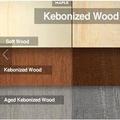
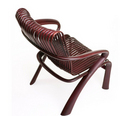
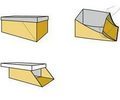
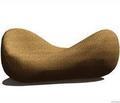
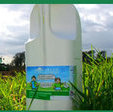
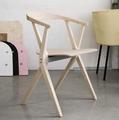
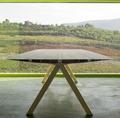


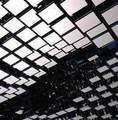
Comments by our Users
Be the first to write a comment for this item.